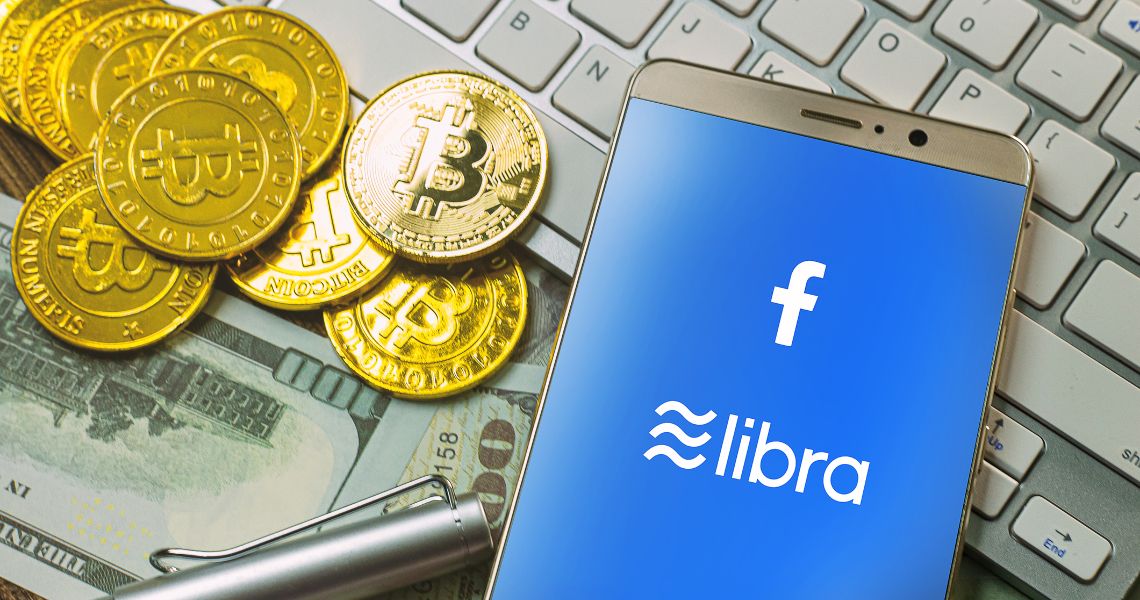Cryptocurrencies and their “mother” system, blockchain, were created for a myriad of reasons, among which is one A-lister – introducing decentralisation into a monetary ecosystem. Bitcoin, Litecoin, Stellar, and other cryptocurrencies have enjoyed their independence by delivering security, anonymity, and fast transactions. A system that risks being compromised by centralised cryptocurrencies.
However, the world doesn’t seem to perceive cryptocurrencies in a non-binary way: while private entities and individuals benefit from regulation-free financial mediums, the governments and big corporations have their own idea about them.
Recently, we’ve witnessed the birth of the biggest centralised cryptocurrency – Libra, or, at least the idea of it. Facebook’s Zuckerberg came forward with his initiative to create this world-covering digital currency that will provide banking opportunities to millions of people. And that’s the case: cryptocurrencies aren’t supposed to be governed by a single centralised institution. So, what’s going on?
What is a decentralised model?
First, let’s begin by explaining what decentralisation actually means and how it benefits digital currencies. In 2008, the very first cryptocurrency, Bitcoin, was created. It was a medium of payment that relied on a peer-to-peer (p2p) exchange.
That p2p network was called blockchain – a system with no government or any other centralised body. Cryptocurrencies in the blockchain were controlled by the actual users who “mined” them (created using their computers’ power capabilities) and determined their supply and price.
This model completely removed the necessity of any governmental control. In the case of actual currencies, governments are their sole operators and managers. And the world has seen many financial crises, including drastic inflation rates that were politically motivated.
To be fair, decentralisation is as much practical model as it is a philosophical assertion. Digital currencies were created under that same philosophy that markets operate more effectively when they’re relieved from the governments’ centralised claws. And that same mindset was pushing them towards their success.
And while almost everyone seemed happy about this model, the governments and big corporations started to push against them and in favour of a new form of cryptocurrency. They’re called “stablecoins” and they’re similar to conventional crypto assets in many aspects, but the differences are also pretty striking.
Stablecoins to offset Bitcoin’s biggest drawback
One of the biggest drawbacks of cryptocurrencies is their high volatility. While they are a great investment asset for online traders, it is totally unreasonable to use Bitcoin, or other cryptocurrencies for that matter, to perform everyday financial transactions or even store value in a long term.
And that’s where stablecoins emerge. As the name suggests, their price is more stable than that of cryptocurrencies. And the reason is pretty simple: instead of being dependent on the supply-demand laws – the number of crypto tokens mined per year – stablecoins are tethered to “real” assets like fiat currencies, commodities, shares, or basket of those assets.
The most famous stablecoin today is, of course, Libra. It’s a financial initiative announced by Mark Zuckerberg in June this year. Libra, just like the majority of other stablecoins like Tether, is going to be pegged to fiat currencies. But unlike the same Tether, it’ll feature a basket of several major currencies like the US dollar, UK pound, Japanese yen, etc.
Two facets of centralisation
And that’s where centralisation comes in. In fact, there are two main aspects of centralised governance here: first, stablecoins enter a zone of governmental control, and second, big corporations also act as centralised governing bodies.
Let’s begin with the first point. As mentioned above, Libra, Tether, and other stablecoins retain their stable prices by being tethered to fiat currencies. The latter, in turn, are managed by central banks or other parts of the government. This means that indirectly, the governments are also in charge of stablecoins and their issuance policy.
The next point, in our opinion, might be more prevalent than the first one. Libra is known to be Facebook’s own project. And despite other big members in the Libra Association, everyone knows that the main decisions will always depend on Facebook and Zuckerberg.
This means that the stablecoin will be governed by a big, centralised entity that Facebook is. And it’ll use everything in its toolbox to extend Libra’s coverage all over the globe.
Implications of centralisation
But is this centralisation trend bad for the users and the global economy? While it’s difficult to make any predictions, we can still make some assertions about certain aspects. Let’s begin by corporate centralisation.
Corporate governance
Facebook claims that almost two billion people that are currently unbanked – with no bank accounts and online payment opportunities – can greatly benefit from its digital currency. Since the platform has almost 2.6 billion users globally, it can easily push Libra into new markets and make it available in some of the poorest countries without necessarily being sanctioned by big banks or other financial institutions.
However, there are certain threats associated with it. You see, Facebook has been involved in several major scandals regarding its users’ privacy. The most famous case is Cambridge Analytica, where the company sold tens of millions of user data to the British political consulting firm in an attempt to study and influence people’s voting patterns.
And when Facebook receives additional leverage over our privacy in the form of our credit card numbers, we’ll become even more compromised. No one will give us any guarantee that the company won’t sell our financial credentials to another firm for any particular reason.
Compliance to the monetary policy
Then there’s government control. In terms of volatility and financial manipulations, it can be pretty beneficial to introduce some level of regulatory control. When stablecoins are tethered to fiat currencies, they become subject to the government’s monetary policy which, in some cases, is pretty stable and secure.
However, the same monetary policy is known to be flawed on many levels. For example, governments artificially boost inflation rates to achieve certain goals: to boost exports, pay external debts, etc. This can also affect stablecoins, even though they operate on a blockchain.
Crypto vs. Stablecoins
The introduction of cryptocurrencies has been a significant event in the financial world. The new digital money is based on a decentralised, peer-to-peer system that takes no directives from governments or other centralised institutions.
However, as time went on, stablecoins emerged to bring more stability to the blockchain. But they also brought along governments and big corporations like Facebook. While the distinction between stablecoins and cryptocurrencies is still being debated, it’s beyond doubt that blockchain won’t be a government-free entity anymore.




